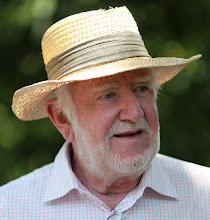The American Physical Society has just held an extraordinary meeting. It has a Subcommittee looking at climate change. The Subcommittee found it necessary to understand the IPCC consensus on climate science through a workshop which dived deeply into some of the more uncertain aspects. In doing so, it hoped "to illuminate for itself, for the APS membership, and for the broader public both the certainties and the boundaries of current climate science understanding."
People taking part in the workshop included the great climate modeller, Ben Santer of Lawrence Livermore Laboratory; the climatologist Judith Curry from Georgia Tech; the atmospheric physicist Richard Lindzen of MIT; and climate scientist John Christy from the University of Alabama. Each of the specialists would be given a chance to address a set of issues drawn up by the APS panel; the panel would ask questions; there would be a general discussion; and they would move on to the next specialist.
I read the 500-odd pages of transcript. I think there must be something masochistic in the desire to capture every word, even the announcement that cake was served. But in amongst the reams of dross, there lay gems. For instance, Santer produced a lovely graphic showing the problems with his own models:
The top half is what the models say should have happened in the upper atmosphere over the past 34 years; the bottom half is what has actually happened. The "fingerprint"of the human-derived carbon dioxide is annoyingly absent - well, annoying to the modellers. The tropical hotspot between about 500 and 700hPa pressure just isn't there. Yet the physics underlying the carbon-dioxide-driven global warming hypothesis is clear - it should be! Sceptic and believer agree on that. Why is it missing? And why, for that matter, has the Arctic air warmed ?
Christy confirmed the problem:
The dots give the data; the squares the average of the data; and the spaghetti lines show the attempts of 25 different models to show what might be happening. Clearly, they fail - the pattern of the fingerprint is wrong. Christy spent some time castigating the IPCC for ignoring this gap between data and models. The IPCC claimed that the data in the upper troposphere, as shown here, was somehow deficient yet, as you can see, the spread of four independent sets of measurements is quite small and the model average is a long way from the measurement average.
Christy also had some fascinating things to say about the "average global temperature". The estimation of this starts with measuring the temperature at a whole lot of points around the globe. At each point, the daily maxima and minima are recorded, and the average temperature at that point for that day is the average of the maximum and minimum.
The trouble comes when you consider what happens in nature, when very often inversions occur and cool air is trapped near the surface. Then you put a few buildings around the place, and the turbulence they cause destroys the inversion layer and the night air is warmer than it would otherwise be - regardless of any heat coming from the building.
The net result is that when you look at data from areas that have become increasingly urbanised, there is little change over time in the day-time maxima, but the nights steadily warm, and this then gets recorded as "global warming." Again, the IPCC claims to have looked at the "urban heat island" effect, and to have taken it into account, but Christy showed that a significant correction was needed - because of the basic atmospheric physics.
The APS Panel was concerned as to how is was possible that the IPCC could claim greater certainty in the latest Assessment Report AR5 than in the previous AR4. In particular, the human impact had gone from 90 to 95% 'certain'. Lindzen was sniffy:
Do you still believe there is consensus?





No comments:
Post a Comment